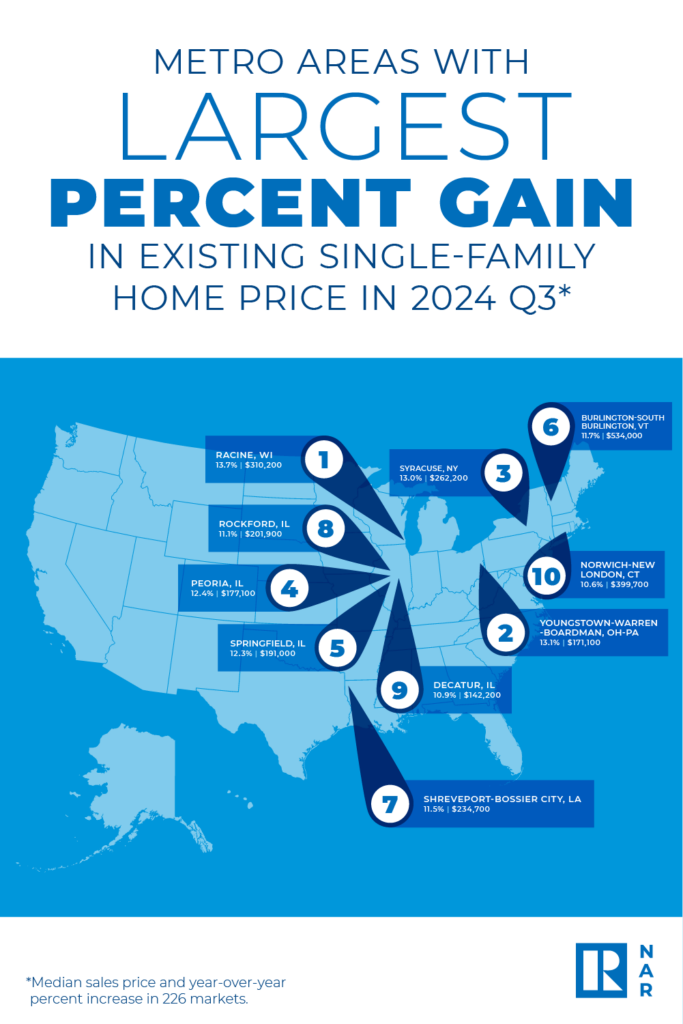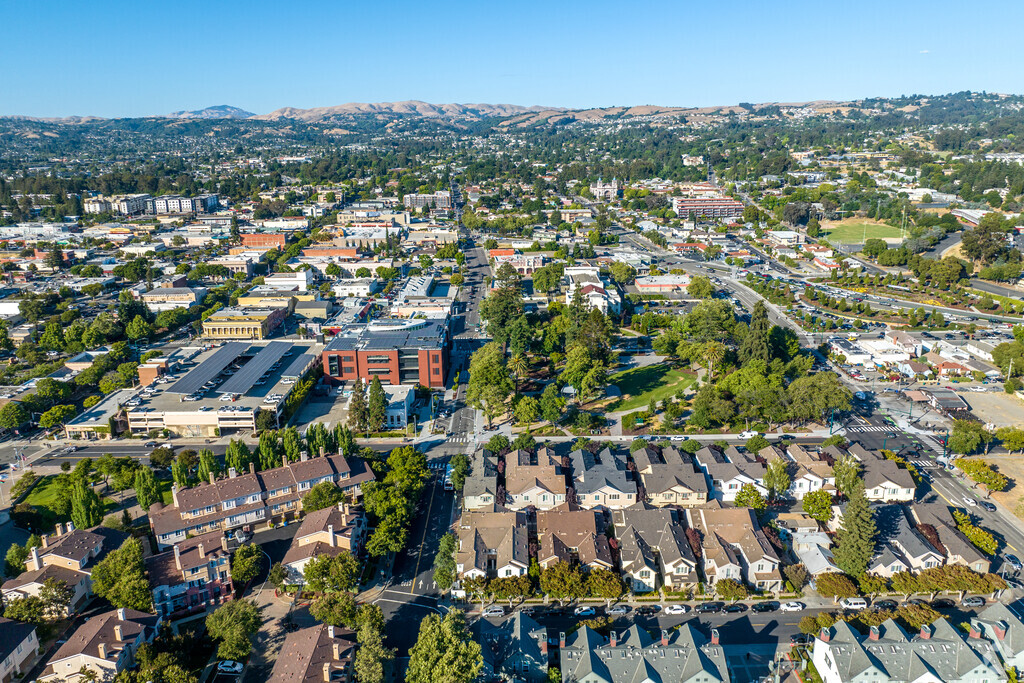According to the National Association of Realtors‘ (NAR) most recent quarterly report, home prices increased in about 90% of metro markets (196 out of 226, or 87%) during Q3 of 2024, while the 30-year fixed mortgage rate varied between 6.08% and 6.95%. Compared to 13% in Q2, just 7% of the 226 metro regions under study saw double-digit price increases within the same time frame.
“Home prices remain on solid ground as reflected by the vast number of markets experiencing gains,” said Lawrence Yun, Chief Economist of NAR. “A typical homeowner accumulated $147,000 in housing wealth in the last five years. Even with the rapid price appreciation over the last few years, the likelihood of a market crash is minimal. Distressed property sales and the number of people defaulting on mortgage payments are both at historic lows.”
The typical single-family existing-home price nationwide increased 3.1% to $418,700 from a year ago. The national median price rose 4.9% year-over-year in the previous quarter.
With a 0.8% year-over-year price increase, the South had the highest percentage of single-family existing-home sales (45.1%) among the major U.S. regions in Q3. Additionally, prices rose 1.8% in the West, 4.3% in the Midwest, and 7.8% in the Northeast.
Gains of at least 10.6% were recorded in the top 10 metro areas with the biggest year-over-year median price increases, which can be impacted by the kinds of properties sold during the quarter.


Illinois Home to 4 of 10 Markets With the Largest YoY Gains in Median Home Price
The top 10 markets were:
- Racine, WI (+13.7%)
- Youngstown-Warren-Boardman, Ohio-PA (+13.1%)
- Syracuse, NY (+13.0%)
- Peoria, IL (+12.4%)
- Springfield, IL (+12.3%)
- Burlington-South Burlington, VT (+11.7%)
- Shreveport-Bossier City, LA (+11.5%)
- Rockford, IL (+11.1%)
- Decatur, IL (+10.9%)
- Norwich-New London, CT (+10.6%)
California Home to Eight of the Top 10 Most Expensive Markets in the U.S.
Overall, the top 10 most expensive markets were:
- San Jose-Sunnyvale-Santa Clara, CA (median home price: $1,900,000; +2.7% year-over-year increase)
- Anaheim-Santa Ana-Irvine, CA ($1,398,500; +7.2%)
- San Francisco-Oakland-Hayward, CA ($1,309,000; +0.7%)
- Urban Honolulu, Hawaii ($1,138,000; +7.2%)
- San Diego-Carlsbad, CA ($1,010,000; +3.2%)
- Salinas, CA ($959,800; +1.5%)
- San Luis Obispo-Paso Robles, CA ($949,800; +6.7%);
- Los Angeles-Long Beach-Glendale, CA ($947,500; +5.6%)
- Oxnard-Thousand Oaks-Ventura, CA ($947,400; +2.8%);
- Boulder, CO ($832,200; -3.0%)

Overall Housing Affordability Sees Slight Uptick in Q3
Compared to the previous quarter, first-time buyers discovered slightly improved affordability conditions. With a 10% down payment loan and a typical starter home worth $355,900, the monthly mortgage payment decreased to $2,097, a 5.5% decrease from the previous quarter’s $2,218. That was a $49, or 2.3%, drop from $2,146 a year earlier. Mortgage payments accounted for 38% of first-time buyers’ family income on average, compared to 40.6% in the prior quarter.
“Housing affordability has been a challenge, but the worst appears to be over,” Yun said. “Rising wages are outpacing home price increases. Despite some short-term swings, mortgage rates are set to stabilize below last year’s levels. More inventory is reaching the market and providing additional options for consumers.”
In 42.5% of areas, a household had to earn at least $100,000 to qualify for a 10% down payment mortgage, compared to 48% in the previous quarter. However, 2.2% of markets required a family to have a qualifying income of less than $50,000 in order to afford a home, compared to 2.7% in the previous quarter.
To read the full report, including more data, charts, and methodology, click here.






